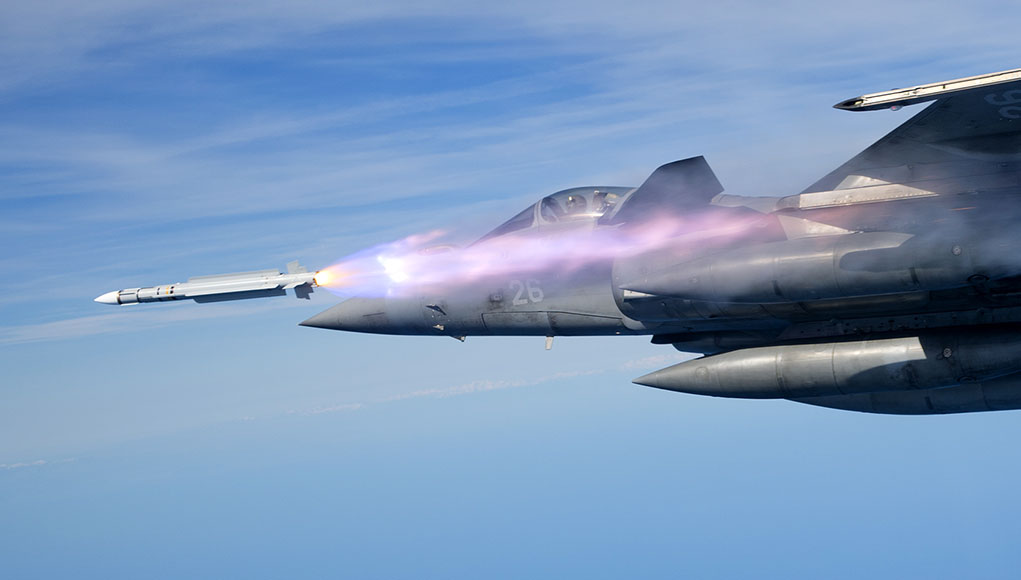Updated November 9, 2018: The French armament directorate (DGA) has launched a development program that will modernize the MICA air/air and surface/air missile, introducing a new generation of the weapon (MICA NG). “The upgrading of the MICA family will enable us to support the armed forces throughout the remaining operational life of the Rafale”, MBDA CEO Antoine Bouvier said.
The need for modernization is determined by the obsolescence of the current MICA that was first introduced in 1996. All current missiles of this family are planned to be phased out of service by 2030. The missile development will continue through 2026. Production and initial deliveries to the French Air Force and Navy are expected to continue through 2031.
Maintaining the size, weight and electronic interfaces of the current missile, MICA NG will provide the most effective successor to MICA. With an improved seeker and new propulsion, it will have the agility and performance to cope with modern threats and countermeasures. This includes targets with reduced infrared and electromagnetic signatures, atypical targets (UAVs and small aircraft), in addition to the threats normally countered by air-to-air missiles (combat aircraft and helicopters).
The new generation will maintain the same MICA versions – a passive (infra-red homing) and active (RF seeker). Among the enhancements to the MICA NG are the use of a new infrared seeker that uses a matrix sensor providing greater sensitivity. The radio frequency seeker will use an AESA (Active Electronically Scanned Antenna) antenna, enabling smart detection strategies. The reduced volume of electronic components within MICA NG will allow it to carry a larger quantity of propellant, thereby significantly extending the range of the missile. Utilizing a new double-pulse rocket motor will also provide additional energy to the missile at the end of its flight to improve maneuverability and the ability to intercept long-range targets. The missile’s health will be monitored continuously by internal sensors, through the weapon’s life, in storage, transport and in flight. This function will contribute to reduce maintenance requirements and cost of ownership.
[wlm_nonmember] Subscribe to access the full version of this article
Subscribe to access the full version of this article
[/wlm_nonmember][wlm_ismember]Given the current limitations imposed on some of MBDA’s weapons, the MICA NG the company will include no US content, thus be exempt of US export limitations (under the International Traffic in Arms Regulations (ITAR). This will ensure its export potential to nations limited by ITAR regulations. Potential export customers for the missile include Egypt, India, Greece, and Qatar. Operators of the naval air defense variant (MICA VL) include Botswana, Egypt, Georgia, Morocco, Oman, Saudi Arabia, and Singapore.
The majority of the investment is shared by the program partners – MBDA, Safran, and Thales). The French commitment for orders early in the program’s life provides was included in the six years ‘military planning law’ planned for 2019-2015. The partners with the incentive for the development. As a partner in the program, the government will also earn the royalties on export sales, that add additional savings or revenues down the road.
At present MICA missiles are the primary air/air missile of the Rafale and the latest versions of Mirage 2000-5 combat aircraft. Both are expected to remain in service beyond the 2030s. By the time the new missile is fielded the Rafale is expected to be equipped with the Meteor Beyond Visual Range Air/Air Missile. MICA NG will be still required to provide self-protection at close range.

[/wlm_ismember]




















